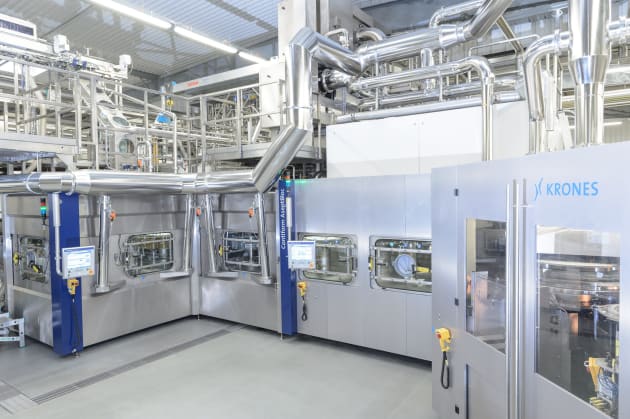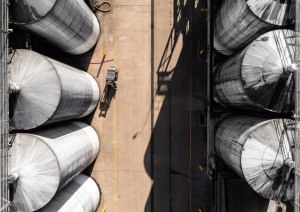As filling technology advances apace, leading players have identified three major emerging trends:
-
Absolute product safety through hygienic design
-
Filling performance optimisation
-
Increased sustainability of systems with reduced materials consumption
These trends are coming to the fore as a result of continuous improvements along the entire production journey, for example, by increasing the degree of automation of filling valves or by using intelligent filling valve components, according to Thomas Ricker, director at Krones.
Block configuration, which mechanically and electronically combining individual machines into a single unit, has also proved to be an excellent tool in further optimising filling processes, says Ricker.
The inline production of PET containers and immediate filling without intermediate conveyors also facilitates the use of lightweight bottles.
As good as glass, but better
“In filling, PET bottles are becoming increasingly important. With suitable coating processes the optimum qualities of glass can be combined with the weight advantages of the PET bottle,” says chairman of the Executive Board of KHS, Professor Dr.-Ing. Matthias Niemeyer.
As an example, a lightweight 1-litre PET bottle for milk and milk-based beverages can be filled aseptically, it protects the product, reduces production costs and is fully recyclable.
Niemeyer also sees efficiency and flexibility benefits for the user through direct connection of the blower, labeller and filler. These benefits are especially clear in the case of the high-performance requirements of multinational manufacturers.

The rise (and rise) of aseptic
For the filling of sensitive, lightly acid beverages in PET containers, aseptic seems to be emerging as the favoured option.
Currently, a variety of choices are being offered by the manufacturers and used by fillers, targeted to the specific application.
Whether cold-aseptic filling with paracetic acid or dry-aseptic filling with hydrogen peroxide, whether sterilisation of the finished container or already of the preform, whether an individual machine or blocking of units — the best solution for the application depends on the requirement criteria of the operator.
In aseptic filling in particular, developments can be expected which drive increased flexibility of the system concept, in expanding the performance levels and using sterilisation technologies that help reduce the overall consumption of a system, and total cost of ownership.
Fruit juice: from process to fill
Safety and health are key consumer demands for fruit juice products. Sophisticated process technology today makes it possible to gently process raw materials under production conditions that have been optimised for hygiene. Processes such as micro- and ultrafiltration, and high pressure pasteurisation ensure higher nutritional values.
This also includes the separate handling of juice and fruit pieces in process technology when dealing with extremely healthy and flavourful juice. It starts with product handling and continues until the bottling process. This is a good example of systematic thinking, which covers each and every aspect of beverage production.
The latest developments in liquid processing and filling technology will be showcased at drinktec 2017, which takes place in Munich from 11-17 September.








